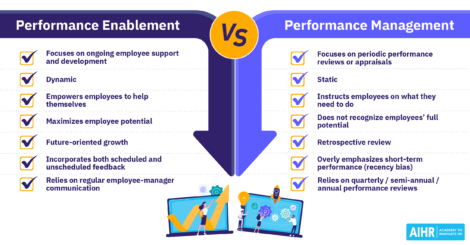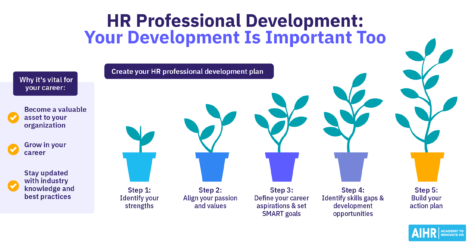Shedding Light on Knowledge Hiding

With the rise of remote work and increased employee mobility thanks to the gig economy, knowledge sharing is becoming increasingly important for organizations. However, it is not enough to simply facilitate knowledge sharing. In order to be effective, HR should actively combat knowledge hiding.
Knowledge hiding can be defined as “an intentional attempt by an individual to withhold or conceal knowledge that has been requested by another person”. It is much more prevalent than you think. One common belief among (HR) managers is that knowledge hiding did not occur in their organizations. My research showed otherwise.
Let’s take a look at the situations in which knowledge hiding occurs and the impact it has on organizations and their business. I will explain how you can make this visible and measurable. I will also suggest practical approaches and policies to prevent knowledge hiding in your organization that you can apply directly.
Why keep colleagues in the dark?
Knowledge hiding in organizations happens for many reasons, which can be divided into three categories:
- Organizational-related reasons, for instance, a competitive environment, unfavorable norms or policies, and a poor motivational climate. When an organization has a culture of secrecy and not sharing, employees tend to adopt that culture.
- Example scenario: Tom and Jill are both account managers at a bank. Tom prides himself on being the team’s top performer and the rewards that come with it, which is largely based on individual portfolio value compared to that of their peers. The key to Tom’s success is his know-how when it comes to cross-selling. Jill recently joined the team and asks Tom for advice. Tom takes a look at Jill’s portfolio and plays dumb. He actually sees plenty of opportunities but prefers to maintain the difference in perceived performance to maximize his own reward.
- Example scenario: Tom and Jill are both account managers at a bank. Tom prides himself on being the team’s top performer and the rewards that come with it, which is largely based on individual portfolio value compared to that of their peers. The key to Tom’s success is his know-how when it comes to cross-selling. Jill recently joined the team and asks Tom for advice. Tom takes a look at Jill’s portfolio and plays dumb. He actually sees plenty of opportunities but prefers to maintain the difference in perceived performance to maximize his own reward.
- Job-related motivations include time pressure, knowledge complexity, and protection of important information. Note: sometimes an employee wants to secure confidentiality or otherwise protect the interests of a third party (Connelly et al, 2011).
- Example scenario: Rajesh and Regina are management consultants at a large consultancy firm. Rajesh is currently trying to land a project. The faster he can get his proposal to the client, the better he can showcase the firm’s expertise, and the better the odds of sealing the deal. He asks Regina to share previous project proposals, reports and cases with him. Because of her own projects, Regina is short on time. She would need to anonymize cases and is unsure how much would end up being useful to Rajesh. Claiming confidentiality, she rationalizes refusing to share materials or disclose details that may help him, saving herself time but hurting the organization.
- Example scenario: Rajesh and Regina are management consultants at a large consultancy firm. Rajesh is currently trying to land a project. The faster he can get his proposal to the client, the better he can showcase the firm’s expertise, and the better the odds of sealing the deal. He asks Regina to share previous project proposals, reports and cases with him. Because of her own projects, Regina is short on time. She would need to anonymize cases and is unsure how much would end up being useful to Rajesh. Claiming confidentiality, she rationalizes refusing to share materials or disclose details that may help him, saving herself time but hurting the organization.
- Inter- & intrapersonal causes, such as poor intentions, revenge, seeking power, and a lack of trust (Staples & Webster, 2008).
- Example scenario: Ellen works as an operations specialist for a transport company and has been on the lookout for a promotion for some time now. Her colleague Tarik is having difficulties processing the inventory in the ERP system and asks Ellen for help, as she is known as IT savvy. Ellen suspects that her manager will soon leave and sees Tarik as a rival for the position. She aims to remain the expert on systems they work with, to have a better chance of getting the job. Because of this, she evades his request and pretends to forget about it.
Either positively or harmfully intended, the reasons for hiding knowledge can vary, as can the methods (evasive hiding, rationalized hiding, or playing dumb; Connelly et al., 2011).
Organizational level factors can affect factors at the job level and, in turn, factors at the individual level. This is illustrated in the figure below: due to a competitive environment and strict individual targets in their jobs, employees may hide their knowledge in an attempt to maintain their power and status.

HR can mainly influence factors on the contextual, organizational level. But these affect the other levels! Still, how much effort is warranted to expose and tackle knowledge hiding?
The long and dark shadows of knowledge hiding
Knowledge hiding can have serious financial implications for companies. Consider the scenarios described earlier:
- If Ellen gets the job, she may not be the best candidate and the company gets someone who strategically hides knowledge in a more influential position. On average, a bad hire can cost an organization 30% of the employee’s first-year earnings (Cardenas, 2014).
- If the lack of knowledge hiding seen between Rajesh and Regina is common within the firm, it could cost the firm its competitive edge. Let’s assume it has a proposal win rate of 33% (the industry average (Simmons et al., n.d.) and a revenue of 10 million dollars. Every 1% on top of that 33% proposal win rate translates to roughly 300,000 dollars in annual revenue. What percentage could be gained by eliminating the adverse effects of knowledge hiding?
- The tendency to keep knowledge for cross-selling to oneself is likely a common theme within the bank in the example because this behavior is inadvertently rewarded. This can hurt the bank’s overall portfolio, as cross-selling is known to increase customer loyalty.
The consequences of knowledge hiding can be substantial. Besides financial implications, it also brings risks of damaging relationships and causing distrust among employees (Connelly & Zweig, 2014). It can lead to reciprocation: colleagues refusing to share knowledge with those who hide knowledge. This can seriously undermine the creativity and effectiveness of teams and entire organizations.
Meanwhile, discouraging knowledge hiding behaviors results in several benefits:
- retention of know-how (Postolache, 2017)
- sharing best practices across the organization (North et al., 2004)
- better and faster decision making (Postolache, 2017)
- more innovation and growth (Tsai, 2017)
These benefits stress the importance of knowledge transfer for organizations. We also face some challenges from our gig economy and the digital age, where temporary positions are common and employees’ possibilities to work remotely are increasing (sometimes at the expense of team spirit). Companies risk losing valuable knowledge and moving slower than competitors that share knowledge more effectively internally.
Before they can act, however, organizations need to identify if and how issues arise in their own context.
Knowledge hiding made visible
The reasons and methods for knowledge hiding differ between organizations and teams, and so do the consequences. If you are wondering whether, why and how knowledge hiding occurs in your organization, data can provide answers. You can take two approaches:
- Gather new data. One way to measure whether and how knowledge is hidden at your workplace is through a survey. The academic literature provides us with several existing and reliable questionnaires for the topics you may want to measure. Examples are:
- Knowledge hiding questionnaire: a 12-item scale developed by Connelly et al. (2012). An example statement that follows a knowledge hiding scenario is: “In this instance, I offered him/her some other information instead of what he/she really wanted”.
- Interpersonal trust among employees: a six-item scale by Cheng & Li (2001). An example item is: “‘I think my colleagues are worthy of trust”.
- Surveys on employee vitality, health, and job satisfaction (SKB, n.d.), in particular questions regarding workload and time pressure as job-related factors.
- HR practices as an organizational factor: how do your employees perceive your HR practices (service quality, cost reduction, employee well-being, etc.)? A 20-item scale on HR attributions by Nishii et al. (2008). One of the statements is: “The organization pays its employees what it does so that employees will feel valued and respected—to promote employee well-being”.
- Climate as an organizational factor: a 33-item scale on relational models by Haslam & Fiske (1999), examining how employees evaluate the organizational climate (communal sharing, equality matching, authority ranking, and market pricing). An example item is: “People in the team share many important responsibilities jointly, without assigning them to anyone alone.”
- Use available data. A risk of introducing new questionnaires is survey fatigue among employees (i.e., the amount of survey requests leads to decreased or skewed participation and decreased reliability of outcomes). Alternatively, you can consider data already available in your organization and likely related to effects (and outcomes) of knowledge hiding or sharing. To identify promising data sources, involve stakeholders across the organization and consult them to guide your data analysis and indicator development. This approach can also be taken to enrich or phase out a survey, by identifying existing data related to survey outcomes.
Keep in mind what you need to monitor effectiveness as you implement policies to encourage knowledge sharing and discourage knowledge hiding. Even though HR’s influence is strongest at the organizational level, it may be that the desired effects occur (and should be monitored) mostly at the personal or job-related level.
With ideas on how to measure and monitor effects, what policies can HR consider?
When knowledge is hiding visible, we can make it go away
Common policies to reduce knowledge hiding include:
- Organizational-level policies. The easiest option for HR is to implement policies aimed at the organizational level. For example, thinking of the scenario with Tom and Jill, organizations could consider a team-based remuneration policy. Meant as an incentive for employees to maximize performance and profits for the company, individual performance-based pay can encourage maximizing one’s own reward by hiding knowledge, at the expense of company performance.
- Job-level procedures. Employees need time to share their know-how with each other. In the scenario with the consultancy firm, Regina may want to help out Rajesh, but as she is struggling with her own deadlines, she doesn’t feel able to. Organizations can use surveys and other data to periodically examine work processes and workload to establish a working environment that enables mutual cooperation and assistance.
- Individual-level actions. Even with the right policies and procedures, individuals such as Ellen may have a tendency to withhold knowledge for personal gain. As a company you can reduce such behavior by implementing leadership assessments for management positions, encouraging fostering interpersonal trust. Additionally, organizations could offer training to improve adaptability skills, self-management, organizational citizenship (i.e. going the extra mile and acting altruistically) and thus minimize knowledge hiding (Han et al., 2016).
Conclusion
The results are in: if you think knowledge hiding doesn’t occur in your organization, you may want to check your data. You could be in for a nasty surprise.
Despite many efforts to enhance knowledge sharing (for example with IT systems and knowledge policies), employees may still be encouraged to withhold their know-how from peers. And that can cost more than you think.
To address this, we need to look beyond providing employees with tools that support desired behavior. After all, why would they use those tools? Do they have the space and the time to do so? It is increasingly important to understand employees and their motives. And that is why we need to rely on more than our views and experience. We need data.
Interested in reading the full report on knowledge hiding by Anne Roefs? You can find it here.
Weekly update
Stay up-to-date with the latest news, trends, and resources in HR
Learn more
Related articles
Are you ready for the future of HR?
Learn modern and relevant HR skills, online












